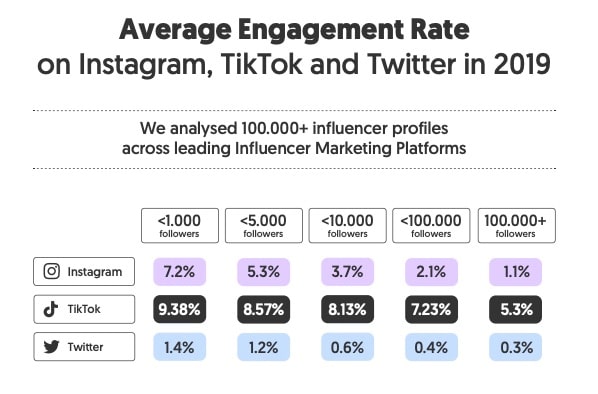The Micro-Influencer is all the rage among marketing pros right now. Everywhere you turn someone talks about them, even recommends them over bigger influencers out there. While leveraging micro-influencers is incredibly smart let’s not let the hype distract us from some facts.
New data out from the Influencer Marketing Hub and CreatorIQ hypes micro-influencers significantly. They show that from 2016 to 2019, brands went from using three micro-influencers for each mega-influencer to a 10-to-1 ratio.
They define mega-influencers as those with over 1 million social followers. Micro-influencers, by their definition, are those with less than 100,000. I’m not sure why they didn’t include the 100,000-999,999 follower influencers in the math. Probably because it wasn’t as dramatic.
The Micro-Influencer Data
The first thing that jumped out to me about the significance of the claim was that in the last three years we’ve seen incredible growth in the number of influencers. That rise has come mostly in those with under 1 million followers. Also, brands have backed off paying mega-influencers because of their exorbitant prices. So the data makes sense to me, but it’s not revolutionary.
Another data point from this benchmark report I found interesting was the difference in engagement rates between those with large followings versus the more micro- and nano-influencer sets.

On Instagram, far and away the more popular influencer marketing channel for brands, the engagement rate of those with 100,000 followers or more sits at 1.1 percent. When you go down in numbers, the engagement goes up, peaking at a 7.2% rate for those with under 1,000 followers.
If you think that alone is a great reason to divert your influencer marketing dollars away from larger influencers, let’s do some math:
- 1.1 percent engagement of 100,000 followers is 1,100 people
- It doesn’t matter what 7.2% of 1,000 is (it’s 72) because the total number of people in the total audience is less than the number who would see it in the other approach
- Even if you look at those with 10,000 or fewer followers and the average engagement rate of 3.7%, you’re looking at 370 people — ⅓ the size of the mega-influencer’s engaged audience.
What Does This Mean for Your Micro-Influencer Strategy?
This doesn’t mean you should toss micro- or nano-influencers aside. These are average numbers and they may or may not have any impact on your influencer marketing efforts.
But let’s stop comparing them on a 1:1 basis. If brands are, in fact, using micro-influencers 10 times for every one mega-influencer, then your engaged audience for 10 individuals with 10,000 or fewer followers is 3,700.
(Keep in mind that 1.1% of 1 million followers is, indeed, 11,000 people. But the report only gives us 100,000+ engagement numbers, not those of mega-influencers. Why would they make the math or conclusions easy, right? Heh.)
While I have a very skeptical view of the usefulness of mega-influencers, I would use one who was engaged in my brand and had strong engagement from their audience over 10 or more micro-influencers. Ten people with 10,000 engaged followers will likely move the needle more efficiently.
Ten influencers with 10,000 or fewer followers shouldn’t cost much more than free product. A proper mega-influencer is likely to start at $10,000 or more for a single post.
In the end, they might be worth it. But understanding the math behind the analysis will help you make smarter decisions for your brand’s influence marketing efforts.
You can see the full benchmark report from Influencer Marketing Hub and CreatorIQ at the Hub’s website.
Get The Influence Marketing Book
My forthcoming third book, Winfluence: Reframing Influencer Marketing to Ignite Your Brand is due out in early 2021. To get my monthly Influence email newsletter and be the first to get access to the new book when it’s available, sign up below!

